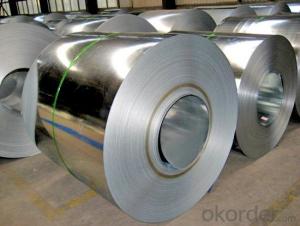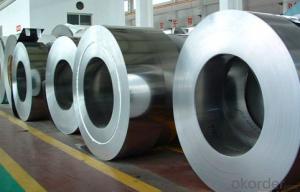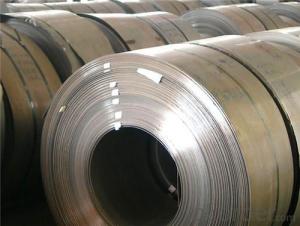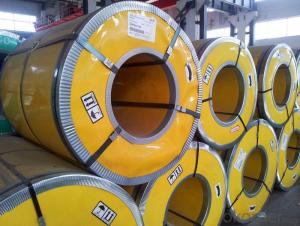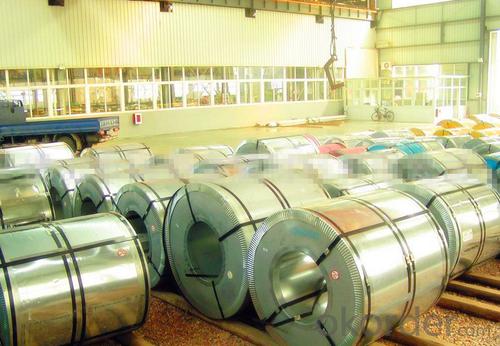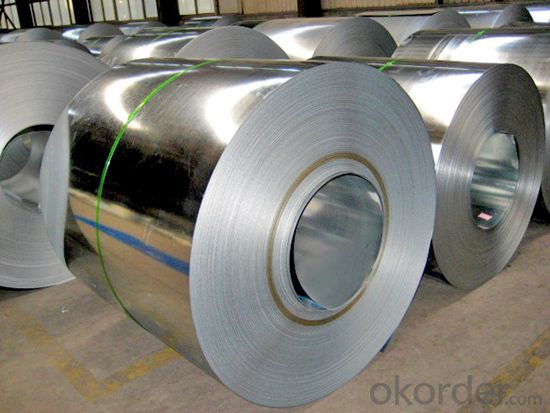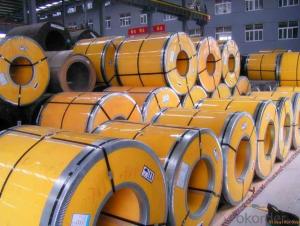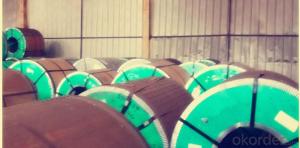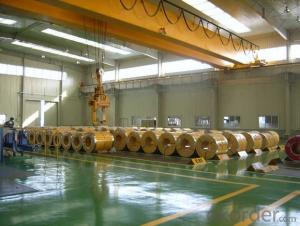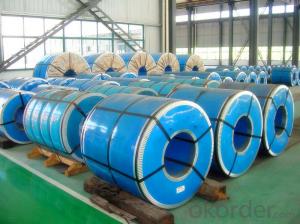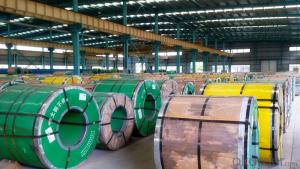Hot Rolled No.1 Finish Inox 304 Stainless Steel Coil
- Loading Port:
- Tianjin
- Payment Terms:
- TT OR LC
- Min Order Qty:
- 20 m.t.
- Supply Capability:
- 3000 m.t./month
OKorder Service Pledge
OKorder Financial Service
You Might Also Like
Hot Rolled No.1 Finish Inox 304 Stainless Steel Coil / Sheet
Specification:
Thickness: 0.1mm-20mm;
Width: 400mm-3000mm;
Length: 1m-6m;
Standard:JIS,AISI,ASTM,GB,DIN,EN
Products information:
Thickness | 0.1mm-20mm |
Width | 400-3000mm or customized |
Length | 1m-6m or customized |
Standard | ASME, ASTM, EN, BS, GB, DIN, JIS, etc |
Material Grade | 300series |
Surface | 2B, BA, 8K, No. 4, HL, etc. |
Brand name | TISCO, LISCO , ZPSS, BAOSTELL , etc. |
Packaging | Standard export sea-worthy packing |
Technique | Hot rolled stainless steel sheet and coil or Cold rolled stainless steel sheet and coil |
Delivery time | 7-15 working days |
Supply ability | 3000 tons/ month |
Remarks | Thickness, width, length, standard and tolerance can be customized. |
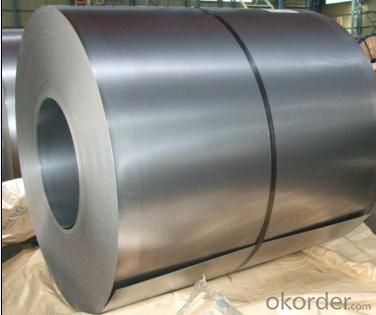
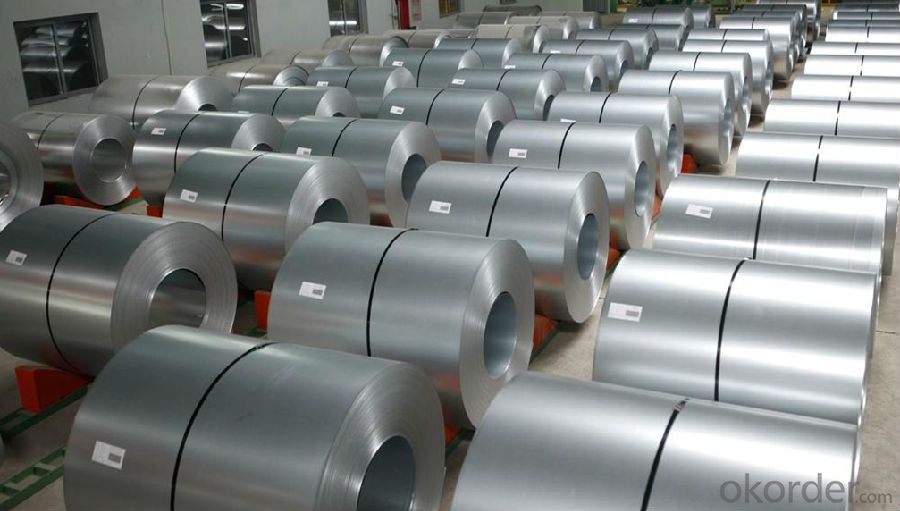

- Q: Are stainless steel strips non-magnetic?
- Yes, stainless steel strips are generally non-magnetic. However, the magnetic properties of stainless steel can vary depending on the specific alloy and its composition. The most common types of stainless steel, such as 304 and 316, are non-magnetic in their annealed state, meaning they do not attract or hold a magnetic charge. This makes them suitable for a wide range of applications where magnetism is not desired. However, some stainless steel alloys, such as ferritic grades, can exhibit magnetic properties due to their higher iron content. It is important to consider the specific type of stainless steel when determining its magnetic properties.
- Q: Can stainless steel strips be used in wastewater treatment plants?
- Certainly, wastewater treatment plants can employ stainless steel strips. Due to its exceptional durability and resistance to corrosion, stainless steel proves to be a fitting material for environments with significant moisture and chemical contact, like wastewater treatment plants. The utilization of stainless steel strips covers a wide range of applications in these facilities, encompassing piping, tanks, screens, and other equipment. Furthermore, stainless steel's ability to inhibit bacterial growth and its ease of cleaning contribute to its hygienic suitability for wastewater treatment purposes.
- Q: Are stainless steel strips available in different colors?
- No, stainless steel strips are typically only available in their natural silver color.
- Q: Can stainless steel strips be used in conveyor systems?
- Yes, stainless steel strips can be used in conveyor systems. Stainless steel is a durable and corrosion-resistant material that is well-suited for use in conveyor systems. It can handle heavy loads and withstand high temperatures, making it ideal for industrial applications. Stainless steel strips are commonly used in the construction of conveyor belts, as they provide strength and stability while allowing for smooth movement of materials. Additionally, stainless steel is easy to clean and maintain, ensuring the longevity and efficiency of the conveyor system.
- Q: What is the maximum temperature that stainless steel strips can withstand?
- The maximum temperature that stainless steel strips can withstand depends on the specific grade of stainless steel. However, most stainless steel alloys can withstand temperatures up to 1500 degrees Fahrenheit (815 degrees Celsius) before significant structural changes occur.
- Q: Can stainless steel strips be used in food processing applications?
- Yes, stainless steel strips can be used in food processing applications. Stainless steel is an ideal material for the food industry due to its superior corrosion resistance, durability, and hygiene properties. It is resistant to rust, staining, and chemical reactions, making it suitable for contact with various food products. Stainless steel strips are commonly used in food processing equipment such as conveyors, mixers, tanks, and cutting tools. Additionally, stainless steel is easy to clean and maintain, ensuring the highest standards of food safety and preventing contamination.
- Q: How do stainless steel strips resist erosion in abrasive environments?
- Stainless steel strips resist erosion in abrasive environments due to their unique composition and protective oxide layer. The high levels of chromium present in stainless steel form a passive film on the surface, which acts as a barrier against corrosion and prevents direct contact of the metal with the abrasive materials. This oxide layer is self-healing, meaning it can repair itself if damaged, further enhancing the steel's resistance to erosion. Additionally, stainless steel's high strength and hardness make it more resistant to wear and tear, allowing it to withstand the abrasive forces present in harsh environments.
- Q: Can stainless steel strips be plated or coated with other metals?
- Yes, stainless steel strips can be plated or coated with other metals. The process of plating or coating involves applying a thin layer of another metal onto the surface of the stainless steel strip. This is typically done through electroplating, where the stainless steel strip is immersed in a solution containing the metal ions that will be plated onto it. An electric current is then passed through the solution, causing the metal ions to bond to the surface of the stainless steel strip. There are several reasons why stainless steel strips may be plated or coated with other metals. One reason is to enhance the appearance of the stainless steel strip. For example, stainless steel strips can be plated with metals like gold or silver to give them a more luxurious or decorative finish. Another reason for plating or coating stainless steel strips is to improve their corrosion resistance. While stainless steel is already highly resistant to corrosion, certain plating or coating materials can provide an additional layer of protection against corrosion in specific environments. For example, stainless steel strips can be coated with zinc to create galvanized steel, which has enhanced corrosion resistance. Additionally, plating or coating stainless steel strips with other metals can also provide functional benefits. For example, stainless steel strips can be coated with materials like nickel or chromium to improve their hardness or wear resistance. This can be particularly useful in applications where the stainless steel strip will be subjected to heavy use or abrasion. In summary, stainless steel strips can be plated or coated with other metals to enhance their appearance, improve their corrosion resistance, or provide functional benefits like increased hardness or wear resistance. The plating or coating process involves applying a thin layer of another metal onto the surface of the stainless steel strip through electroplating.
- Q: Can stainless steel strips be used for architectural cladding?
- Indeed, architectural cladding can certainly utilize stainless steel strips. Stainless steel, being a remarkably durable and corrosion-resistant substance, is an outstanding option for external applications like cladding. With its sleek and contemporary aesthetic, stainless steel enhances the overall look of a structure through its reflective qualities. Furthermore, stainless steel strips can be fashioned into an array of sizes, shapes, and finishes, offering limitless design opportunities. Moreover, stainless steel demands minimal upkeep and boasts an extended lifespan, rendering it an economical alternative for architectural cladding.
- Q: Can stainless steel strips be used in cryogenic applications?
- Yes, stainless steel strips can be used in cryogenic applications. Stainless steel is known for its excellent resistance to extreme temperatures, including low temperatures found in cryogenic environments. It retains its strength and integrity even at very low temperatures, making it suitable for use in cryogenic applications. Additionally, stainless steel has good corrosion resistance, which is essential in cryogenic environments where moisture and other corrosive elements may be present. Overall, stainless steel strips are a reliable and durable choice for use in cryogenic applications.
Send your message to us
Hot Rolled No.1 Finish Inox 304 Stainless Steel Coil
- Loading Port:
- Tianjin
- Payment Terms:
- TT OR LC
- Min Order Qty:
- 20 m.t.
- Supply Capability:
- 3000 m.t./month
OKorder Service Pledge
OKorder Financial Service
Similar products
Hot products
Hot Searches
Related keywords

